The Aurès region around Biskra, not far from the Algerian Sahara, is facing difficult challenges linked to climate change and beyond: desertification, shrinking agricultural productivity, the crumbling of the rural community fabric, depopulation in the ancient cores of traditional settlements and the loss of that knowledge that has made the area habitable and productive for millennia.
The AMAZING project, financed with funds from the 2022 edition of the Polisocial Award (‘Local Development and Green Transition’), aims to contribute to making the Uadi Abiod valley, today among the driest in Aurès, the centre of an active network of knowledge production capable of combining technology and traditional sciences in dealing with climatic, natural and social challenges.
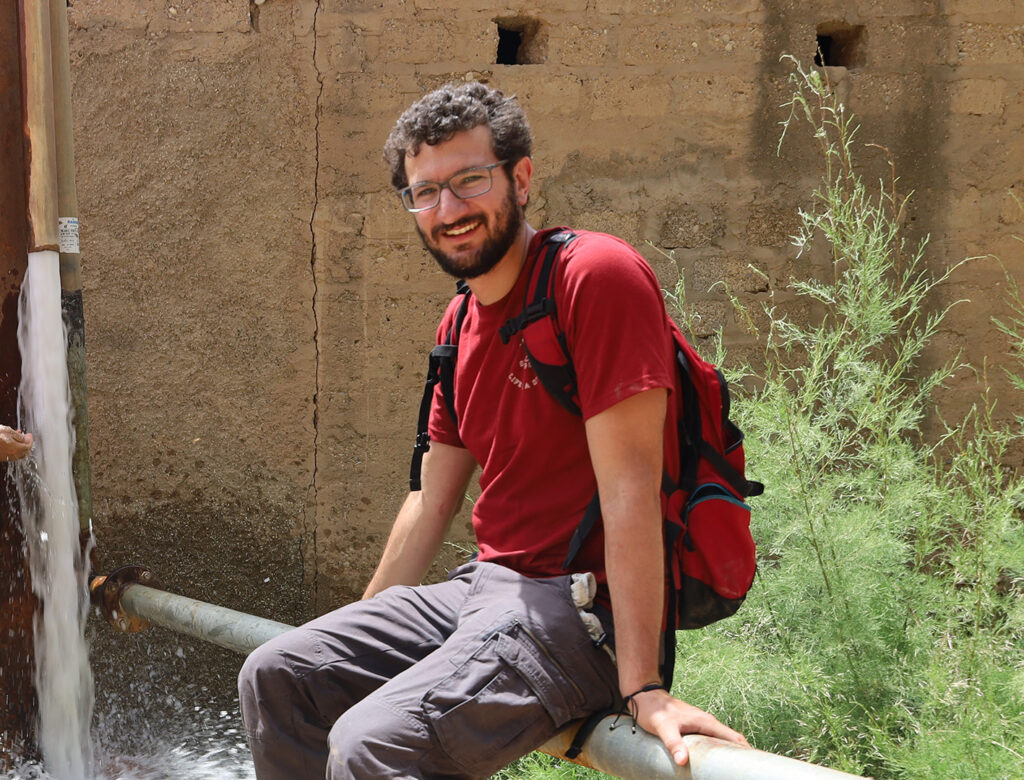
The research coordinator, Prof. Giovanni Porta (DICA) describes it to us.
Prof. Porta, good morning. Tell us about the location first. What context are we talking about?
It is a mountainous territory on the border between the Mediterranean and Saharan desert zones, a heterogeneous area which includes a university town (Biskra), mountainous environments and cultivated valleys. The Uadi Abiod valley itself, on which the AMAZING project focuses, includes different landscapes, ranging from scrubland to semi-desert areas and extensive agricultural cultivation. The settlements have ancient nuclei, now largely abandoned, with dwellings built of stone, raw earth and palm wood, in which construction techniques and spatial layouts responded very effectively to extreme climatic conditions and the needs of agricultural-pastoral cycles.
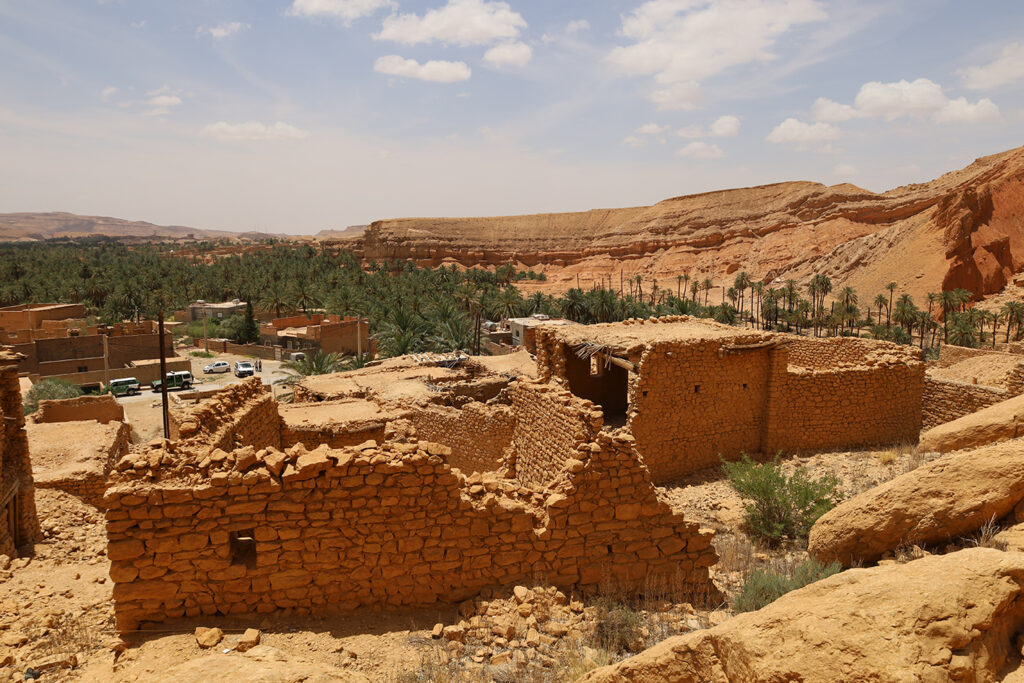
What is cultivated in the valley?
Almost exclusively date palms, with palm groves extending over large areas. And therein lies one of the main problems addressed by the project: the future chance of survival of this type of agriculture, and therefore of this area.
What is the main reason for this?
Water, which is less and less available. Traditional palm groves are gardens with several layers of vegetation, requiring regular maintenance and special hydraulic conditions, which are however no longer what they once used to be for various interrelated reasons. Due to global warming, the Uadi (the intermittent river that washes the valley) carries less and less water and the canal system that once fed the palm groves no longer exists. As water disappears, the traditional methods by which local people have managed these crops and this landscape for centuries also break down, increasing the likeliness for people to leave the valley. It is a vicious circle: with less water agricultural production falls, the workforce leaves, ancient knowledge disappears, villages decay, shrubs replace palms (and with them a thousand-year-old landscape) and what remains is a barren land with poor development opportunities.
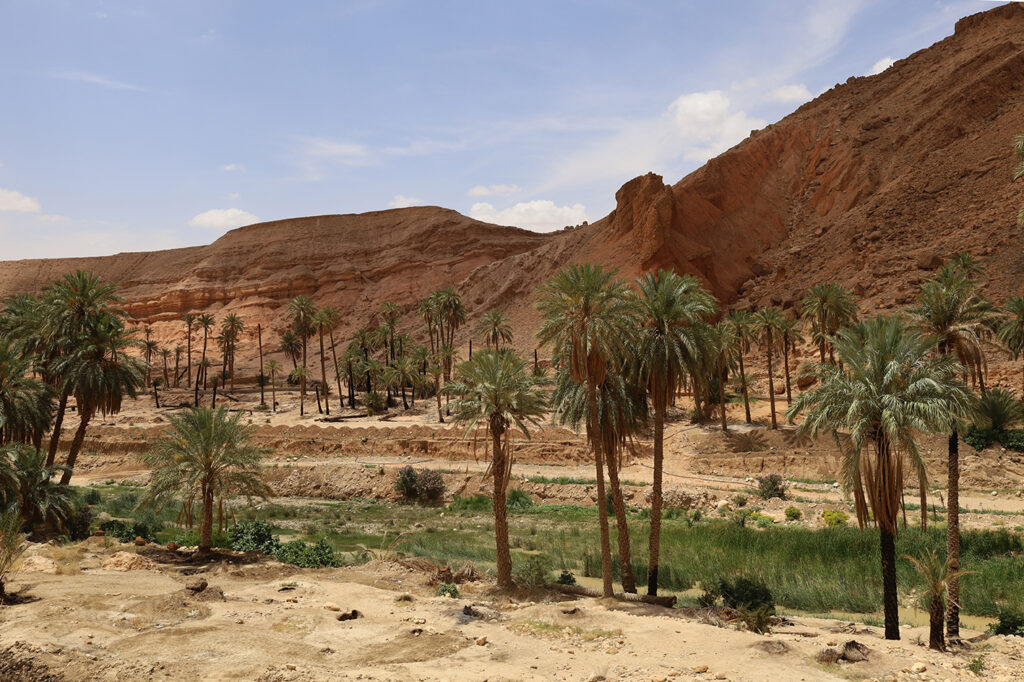
Are alternatives practised?
Some people think of pumping water from the river, but this is an expensive and complex method to manage. In these higher parts of the valley, groundwater cannot even be pumped, as is the case in the flat desert areas around Biskra, where endless crops are fed this way. But this is industrial agriculture in practically uninhabited areas, an entirely different kind of landscape.
So what solutions can we imagine?
An efficient combination of modern technology and traditional science. The irrigation system we are studying is based on canals that are currently disused but have existed for centuries, linked to a thousand-year-old cultural heritage. One of the possible scenarios deals with recovering part of this system, where this proves useful, by supplementing it with the use of underground aquifers and other secondary sources (such as water recovered from the built environment). In general, integrated water resource management is a necessary innovation for these areas, which needs to be balanced according to the climate threat. Therefore, we are building a quantitative model that allows us to evaluate various future scenarios for local agriculture. This action is taking us a lot of effort: first of all, it demands a constant listening and dialogue with the local inhabitants and actors, the first connoisseurs of the place and its history, the first implementers of a possible change and at the same time its first beneficiaries, but also those who will have to face the hardships of transition. This is why we have been organising several focus groups with the inhabitants of M’Chouneche, one of the villages in the valley.
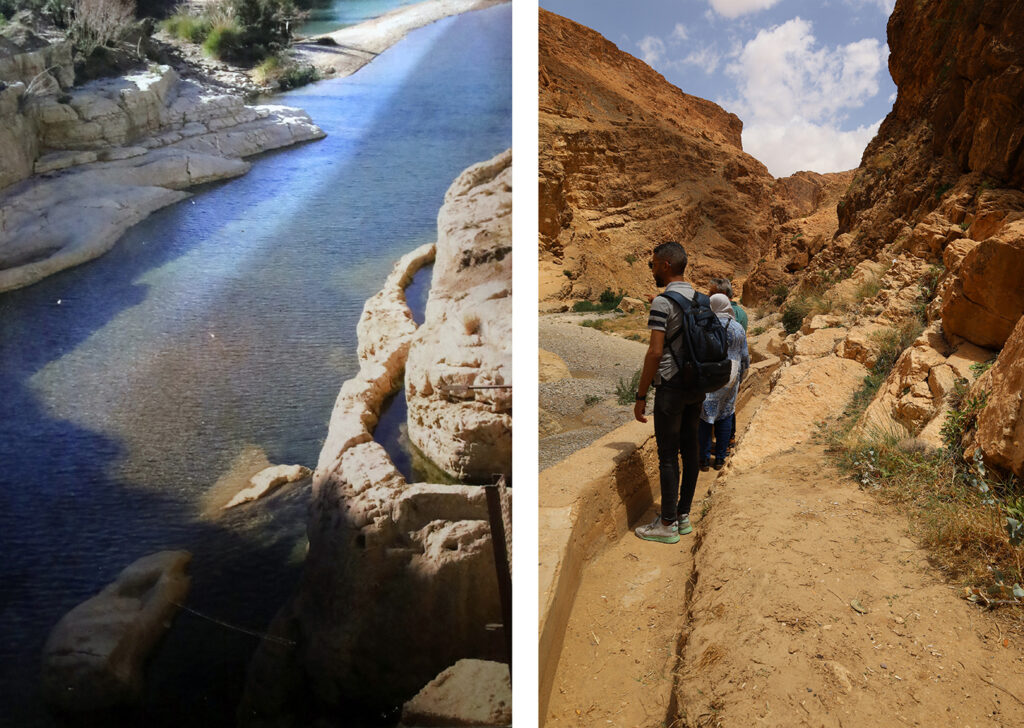
So water is at the heart of your project.
Not only that: the project stems from previous research, funded by MAECI since 2017 and jointly carried out by the DAStU department with Annaba and Biskra Universities (our current partners), focusing on cultural heritage, cultural landscape, restoration and archaeology. The idea of AMAZING was to include other departments in order to open up to additional issues, without forgetting the focus on the built heritage and rather deepening it in a circular perspective. As mentioned, traditional architecture actually offers sustainable solutions both in terms of building materials and energy performance, which must, however, be brought up to date.
Could you please explain this to us?
Adopting a circular economy perspective means exploiting the reuse of local resources: in our case palm tree waste, on which colleagues at Biskra University and Politecnico have been collaborating for some time; this waste is plentiful but currently unused, and yields a fibre that is an excellent, durable and environmentally friendly building material, which can be used both in new construction and in the restoration of historic buildings. The area is actually characterised by the presence of valuable vernacular architecture, evidence of Berber culture and a local identity which deserve to be enhanced. Upgrading the historic building fabric is also a further incentive for inhabitants to stay in traditional villages, an alternative to moving into new houses whose comfort levels (as we have verified) are very poor, such as thermal insulation performance which is inferior to that of traditional houses.
However, water remains a central element in what we envision as a virtuous circle: if water is sustainably secured for agriculture by combining modern technologies and the recovery of local traditions, palm groves will be able to generate primary and secondary products that are fundamental to the local economy and society. Only then can this area embark on paths of resilience and – why not? – repopulation. This also means diversifying the economy, for example by increasing revenue from hospitality (sustainable tourism), which would offset inevitable losses imposed on agriculture by climate change, especially in some areas. The local will is there, as demonstrated by how important the Colonel Sidi El Houes house-museum is for the community, which tells of the pride in the struggle for Algerian independence, but also in the smartness of the material culture of this region.
What are you doing in practice to implement the project?
Our actions rest on two pillars. The first one is a pilot site-school (“cantiere-scuola”) for research and training on restoration, working on a historical building (the aforementioned house-museum) together with local stakeholders. The second is the study of building sustainability, or rather a study on innovative materials and natural ventilation, which we are conducting with some PhD students from Biskra University.
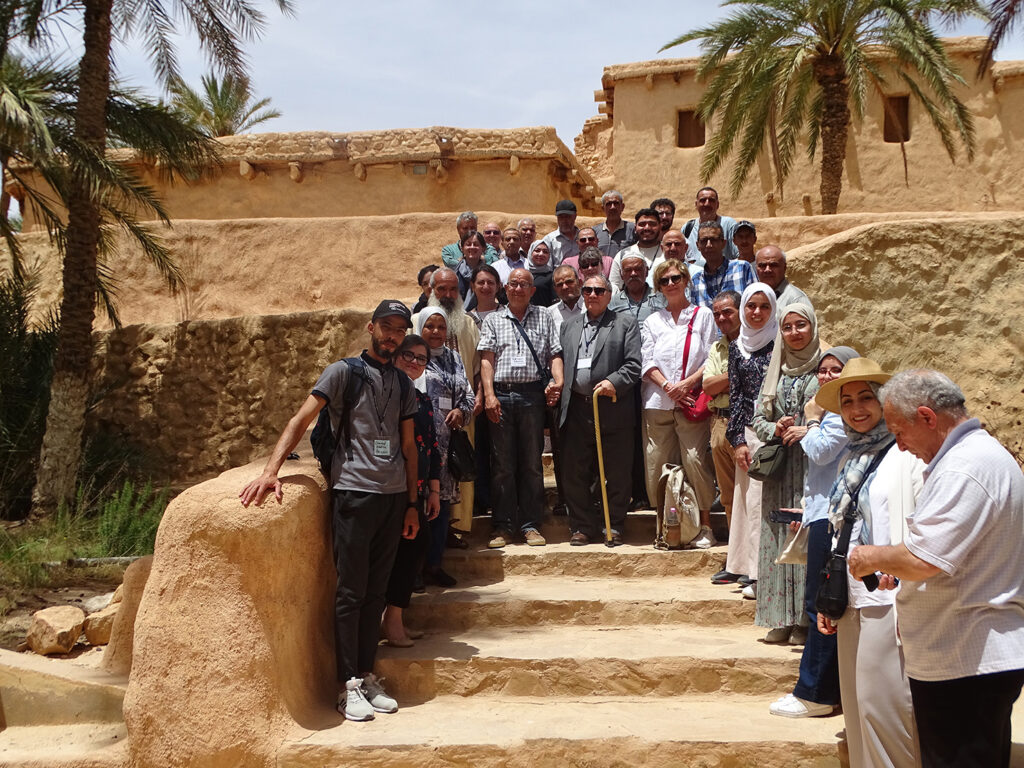
What response are you receiving from local communities and partners?
It is important to say that all activities are carried out in close collaboration, with a view to the inclusiveness of research outside academia. In fact, these processes cannot be directed from the outside without the full understanding and support of the communities concerned. We are putting a lot of effort into this, as for us it is not a mere transfer of knowledge, but a true cultural exchange where it is essential to gain experience in the field, to understand the points of view of those who know and inhabit the places and to share a definition of the problems; otherwise, old and new knowledge and innovative technologies cannot be integrated. For all this we also need to thank the universities of Biskra and Annaba and their mediation work, as well as Poliedra, which supports us in planning participatory and exchange activities.
Let’s talk about this ‘community GIS’. What is it exactly?
We are getting the inhabitants to tell us what they know about the valley, its places and its history, and following this we have started to build a digital map (GIS). The idea behind this is that in the GIS the official data are integrated by this local knowledge, and both are visible, maintained and implemented. It is knowledge that only the inhabitants of the valley have and that needs to be enhanced. We talk about water, agriculture, settlements, cultural heritage and other social and economic aspects. For us, this form of participatory mapping is first and foremost a knowledge tool. For example, while talking to older inhabitants we discovered that the valley was once populated by water mills. This and other information help us learn about the history of the local hydraulic system and to estimate the impact of climate change, discovering past landscapes that no longer exist and imagining future scenarios.
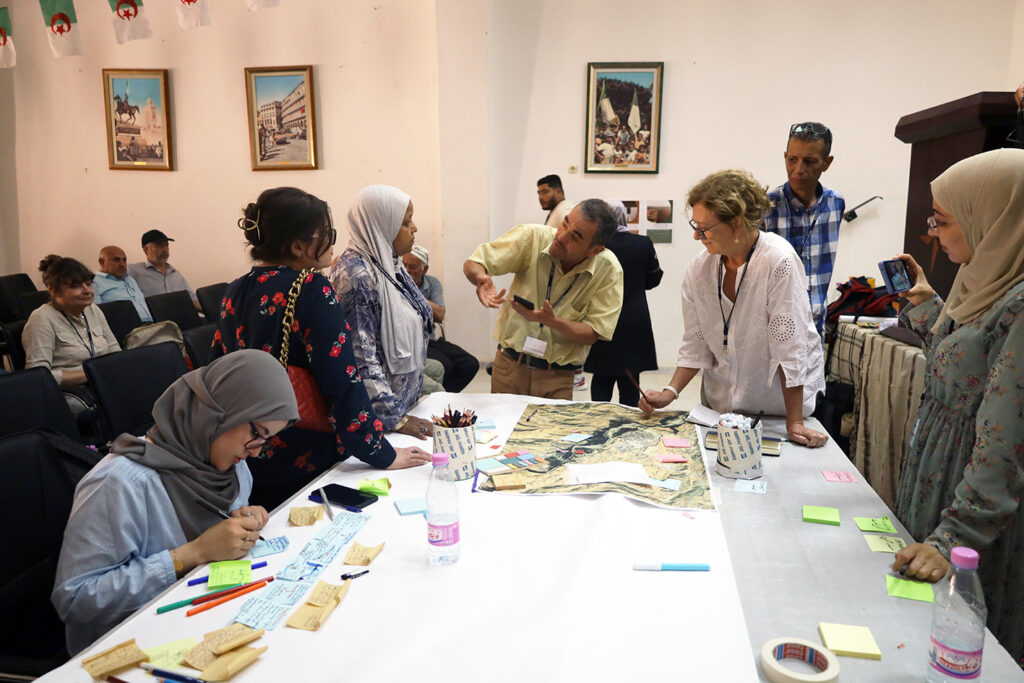
What personal rewards are you receiving from AMAZING?
I am approaching a real and complex problem which can be tackled in several ways and I am put in a position to make a contribution to devising solutions. It is an opportunity to get out of the department and put into practice models that have been tried and tested for years in the laboratory, with all the difficulties, limitations and unforeseen events involved in encountering and ‘clashing’ with a real situation. It’s very different from things I have done and still do in my research. Of course, the practical result can only be seen if we manage to activate and collaborate with Algerian stakeholders, but I must admit that we are shown a lot of willingness and enthusiasm. This is also a source of great satisfaction.
